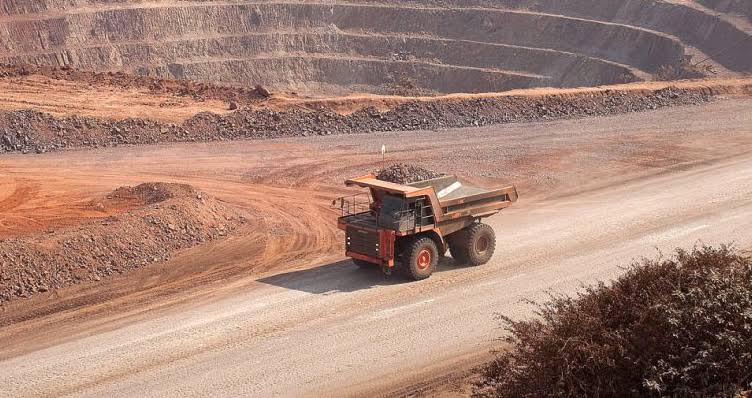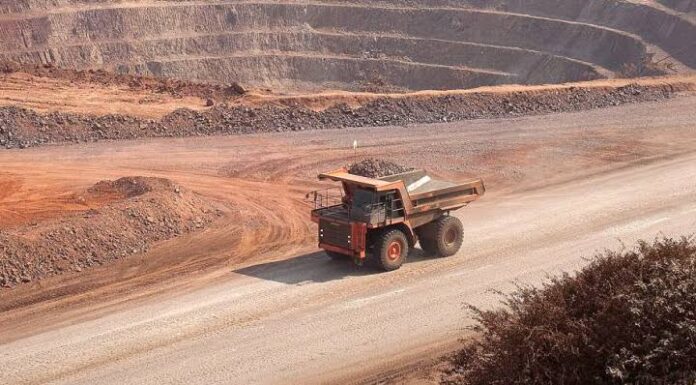
The copper industry is facing an unprecedented challenge as global demand for the metal continues to rise, driven by the transition to renewable energy, electric vehicles (EVs), artificial intelligence (AI), and expanding digital infrastructure. According to industry estimates, the sector will need to invest $2.1 trillion over the next 25 years to bridge the gap between supply and demand.
By 2050, global copper demand is projected to grow by 70%, reaching 50 million tonnes per year. This surge is largely fueled by the world’s decarbonization goals and the increasing role of copper in emerging technologies. The energy transition sector alone is expected to account for 23% of copper demand by 2050, up from 7% today. Similarly, the digital sector, which includes data centers, 5G networks, and AI, is forecast to expand its copper demand share from 1% to 6%.
Transportation will also play a significant role in copper consumption growth, with demand from the sector expected to rise from 11% in 2021 to 20% by 2040. This increase is primarily linked to the accelerating shift towards electric vehicles, which require significantly more copper than traditional internal combustion engine vehicles.
Declining Mine Grades and Supply Challenges
On the supply side, copper mining is becoming increasingly challenging due to declining ore grades. The average copper mine grade has dropped by about 40% since 1991, and between one-third and one-half of the global copper supply is expected to experience grade decline and aging infrastructure challenges over the next decade.
BHP, the world’s largest mining company, has projected that addressing these supply constraints will require a substantial investment of $250 billion. Other industry reports confirm that the current pace of metals supply growth is insufficient to meet the rising demand. BloomberNEF’s annual Transition Metals Outlook highlights that supply deficits could emerge as early as this year for critical metals, including copper, aluminum, and lithium.
China’s Economic Influence on the Copper Market
As the world’s largest consumer of copper, China’s economic policies and consumption patterns have significant implications for the global copper market. In September, China announced its largest economic stimulus package since the pandemic, valued at over $325 billion. The measures, aimed at reviving growth amid a property crisis and deflationary pressures, include a $71 billion stock market stabilization program and reductions in bank reserve requirements.
The impact of these policies on copper demand remains uncertain. In 2023, China’s copper consumption surged by 13% year-over-year, but growth slowed to just 3% in the first eight months of 2024. However, China has now entered a phase of overconsumption, driven by massive investments in renewable energy and electric vehicles. Analysts caution that this could lead to stockpiling, which may put downward pressure on global copper prices.
Despite these concerns, the Bank of America has projected that copper prices will reach $10,750 per tonne ($4.87 per pound) in 2025, citing strong demand fundamentals and constrained supply. In May 2024, copper hit an all-time high of $5.20 per pound due to a supply squeeze.
Supply Deficits and Production Constraints
Chile, the world’s largest copper producer, is forecasting sustained high copper prices over the next decade. The Chilean Copper Commission (Cochilco) expects copper prices to remain above $4 per pound in 2025 and 2026, with demand anticipated to rise 3.2% this year to 27.4 million tonnes. Supply, however, is projected to lag at 27.3 million tonnes, creating a deficit of 118,000 tonnes.
Chile’s copper output has struggled in recent years. The country produced 5.3 million tonnes of mined copper in 2024, but future production estimates have been revised downward. Cochilco recently reduced its 2034 supply forecast from 6.43 million tonnes to 5.4 million tonnes, a reduction nearly equivalent to the annual output of the world’s largest copper mine, Escondida.
Copper’s Role in Clean Energy and Infrastructure
The shift to renewable energy and electrification is a primary driver of copper demand. According to the International Energy Agency (IEA), global copper consumption is expected to rise from 25.9 million tonnes in 2023 to 32.6 million tonnes by 2035, representing a 26% increase.
Clean energy technologies are expected to account for a significant portion of this demand growth. Copper usage in solar panels is projected to increase by 43%, while demand from wind power generation is set to rise by 38%. The largest growth area, however, is expected to be grid battery storage, where copper demand is forecast to surge by 557% by 2035 as energy storage capacity expands.
The expansion of AI-related infrastructure is also expected to drive copper consumption. Data centers, which require large amounts of electricity and copper-intensive wiring, are projected to see electricity demand increase by up to ten times by 2030. AI processing is significantly more energy-intensive than traditional computing, further fueling demand for copper in the power grid.
Barriers to Increasing Copper Supply
Despite the increasing demand, the mining industry faces significant obstacles in ramping up copper production. Research from the University of Michigan and Cornell University has found that the copper needed for a full transition to electric vehicles and renewable energy may be impossible for mining companies to produce at the necessary scale.
Building new copper mines is a lengthy and costly process. It can take 30 years for a copper mine to go from discovery to production in North America, and even in more mining-friendly jurisdictions, permitting delays and regulatory challenges slow development.
Supply chain risks further complicate the outlook. Chile and Peru, the top two copper-producing nations, face labor strikes, declining ore grades, and political instability. Meanwhile, the Democratic Republic of Congo (DRC), Africa’s largest copper producer, continues to struggle with infrastructure challenges, power shortages, and security concerns.
Resource Nationalism and Geopolitical Risks
The copper industry is also grappling with the rise of resource nationalism, where governments seek greater control over their natural resources. In 2023, Panama ordered the closure of First Quantum Minerals’ Cobre Panama mine, removing 350,000 tonnes of copper from the global supply. In Peru, protests and strikes at key mining operations, including the Las Bambas copper mine, threatened to disrupt significant production.
Geopolitical risks extend beyond mining jurisdictions. In the United States, former President Donald Trump initiated an investigation into potential copper tariffs, which could reshape global supply chains. While some analysts expect minimal impact, the uncertainty surrounding trade policies adds another layer of complexity to the copper market.
Investment Needs and the Future of Copper
To meet the increasing demand, the industry must significantly boost investments in new mining projects, exploration, and processing capacity. However, capital spending in the copper sector has remained subdued. After peaking at $26.13 billion in 2013, investment in copper mining development nearly halved, reaching just $14.42 billion in 2022.
Despite these challenges, analysts and market observers believe copper is entering a new supercycle, driven by the global energy transition. Unlike the previous commodity supercycle, which was fueled by China’s industrialization, this cycle is centered on the need for renewable energy, electrification, and digital infrastructure.
The next decade will be crucial in determining whether supply can keep pace with soaring demand. With supply deficits looming, investment in copper production and alternative solutions such as recycling will be essential to prevent shortages that could hinder global economic growth and climate goals.
The above references an opinion and is for information purposes only. It is not intended to be investment advice. Seek a licensed professional for investment advice. The author is not an insider or shareholder of any of the companies mentioned above.
The post Copper Industry Faces $2.1 Trillion Investment Challenge as Global Demand Surges appeared first on MiningFeeds.






